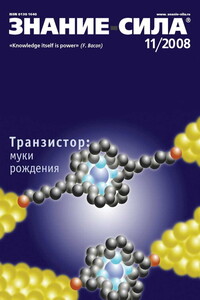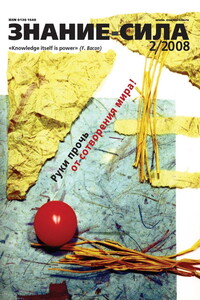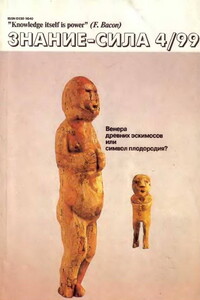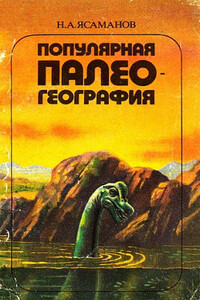317. Andrassy, I. 1983. A Taxonomic Review of the Suborder Rhabditina (Nematoda: Secernentia). Editions de l’office de la recherché scientific et technique outré-mer, Paris, 241 pp.
318. Poinar, Jr., G. O. 1990. Taxonomy and biology of Steinernematidae and Heterorhabditidae. pp. 23–61 in Entomopathogenic Nematodes in Biological Control, Gaugler, R. & Kaya, H. K. (eds.). CRC Press, Boca Raton, FL.
319. Jenkins, W. R. & Taylor, D. P. 1967. Plant Nematology. Reinhold Publishing, New York, 270 pp.
320. Jablonski, D. 1987. Mass extinctions: New answers, new questions. pp. 43–62 in The Last Extinction, Kaufman, L. & Mallory, K. (eds.). The MIT Press, Cambridge, MA.
321. Sullivan, R. M. 1998. The many myths of dinosaur extinction: Decoupling dinosaur extinction from the asteroid impact. pp. 58–59 in The Dinofest Symposium, Wolberg, D. I., Gittis, K. Carey, L. & Raynor, A. (eds.). Academy of Natural Sciences, Philadelphia.
322. Russell, D. A. 1984. Terminal Cretaceous extinctions of large reptiles. pp 383–384 in Catastrophes and Earth History, Berggren, W. A. & Van Couvering, J. A. (eds.). Princeton University Press, Princeton, NJ.
323. Russell, D. A. 1984. The gradual decline of dinosaurs—fact or fallacy? Nature 307: 360–361.
324. Dodson, P. 1990. Ceratopsidae. pp. 494–513 in The Dinosauria, Weishampel, D. B., Dodson, P. & Osmólska, H. (eds.). University of California Press, Berkeley.
325. Fassett, J. E., Zielinski, R. A. & Budahn, J. R. 2002. Dinosaurs that did not die: Evidence for Paleocene dinosaurs in the Ojo Alamo sandstone, San Juan Basin, New Mexico. pp. 307–336 in Catastrophic Events and Mass Extinctions: Impacts and Beyond, Koeberl, C. & MacLeod, K. G. (eds.). Geological Society of America Special Paper 356, Boulder, CO.
326. Benton, M. J. 1990. Scientific methodologies in collision. The history of the study of the extinction of the dinosaurs. Evolutionary Biology 24: 371–400.
327. Desowitz, R. S. 1991. The Malaria Capers. W. W. Norton & Co., New York, 288 pp.
328. Desjeux, P. & Alva, J. 2003. Leishmania/HIV co-infections: Epidemiology in Europe. Annals of Tropical Medicine and Parasitology 97 (Suppl. 1): 3–15.
329. Boots, M. & Sasaki, A. 2002. Parasite-driven extinction in spatially explicit host-parasite systems. The American Naturalist 159: 706–713.
330. Blaustein, A. R. & Dobson, A. 2006. A message from the frogs. Nature 439: 143–144.
331. Laurence, W. F., McDonald, K. R. & Speare, R. 1996. Epidemic disease and the catastrophic decline of Australian rain forest frogs. Conservation Biology 10: 406–413.
332. Van Riper, C., van Riper, S. G., Goff, M. L. & Laird, M. 1986. The epizootiology and ecological significance of malaria on the birds of Hawaii. Ecological Monographs 56: 327–344.
333. Cunningham, A. A. & Daszak, P. 1998. Extinction of a species of land snail due to infection with a microsporidian parasite. Conservation Biology 12: 1139–1141.
334. Cunningham, A. A. 2005. A walk on the wild side—emerging wildlife diseases. British Medical Journal 331: 1214–1215.
335. Perrins, C. 1979. Birds, Their Life, Their Ways, Their World. The Reader’s Digest Association, New York, 416 pp.
336. Alvarez, L. W. 1980. Extraterrestrial cause for the Cretaceous-Tertiary extinction. Science 208: 1095–1108.
337. Poinar, Jr., G. O. & Buckley, R. 2006. Nematode (Nematoda: Mermithidae) and hairworm (Nematomorpha: Chordodidae) parasites in Early Cretaceous amber. Journal of Invertebrate Pathology 93: 36–41.
338. Poinar, Jr., G. O. & Szadziewski, R. 2006. Corethrella andersoni (Diptera: Corethrellidae), a new species from Lower Cretaceous Burmese amber. Proceedings of the Entomological Society of Washington 109: 155–159.
339. Courtillot, V. E. 1990. A volcanic eruption. Scientific American 256: 44–60.
340. Archibald, J. D. 2002. Dinosaur extinction: Changing views. pp. 99–106 in Dinosaurs: The Science Behind the Stories, Scotchmoor, J. G., Springer, D. A. & Breithaupt, B. H. (eds.). American Geological Institute, Alexandria, VA.
341. Sharpton, V. L. & Marin, L. E. 1997. The Cretaceous-Tertiary impact crater and the cosmic projectile that produced it. Annals of the New York Academy of Sciences 822: 353–380.
342. Fastovsky, D. E., Huang, Y., Hsu, J., Martin-McNaughton, J., Sheehan, P. M. & Weishampel, D. B. 2004. Shape of Mesozoic dinosaur richness. Geology 32: 877–880.
343. Archibald, J. D. 1996. Dinosaur Extinction and the End of an Era: What the Fossils Say. Columbia University Press, New York, 237 pp.
344. Poinar, Jr., G. O., Lambert, J. B. & Wu, Y. 2007. Araucarian source of fossiliferous Burmeses amber: Spectroscopic and anatomical evidence. Journal of the Botanical Research Institute of Texas 1: 449–455.
345. Poinar, Jr., G. O. & Buckley, R. 2007. Evidence of Mycoparasitism and Hypermycoparasitism in Early Cretaceous Amber. Mycological Research 111: 503–506.
346. Poinar, Jr., G. 2007. Early Cretaceous flagellates associated with fossil sand fly larvae in Burmese amber. Memórias do Instituto Oswaldo Cruz 102: 635–637.
347. Poinar, Jr., G. O., Kirejtshuk, A. G. & Buckley, R. 2008.





